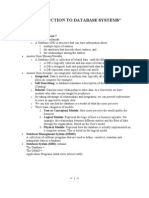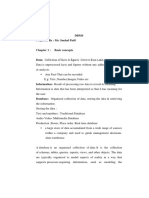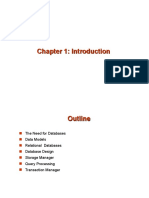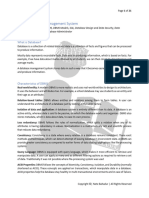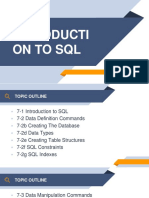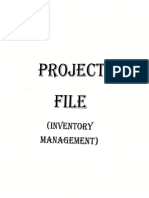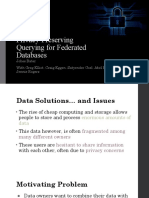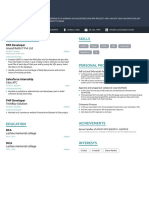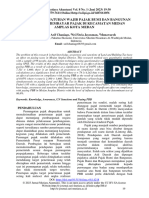0% found this document useful (0 votes)
21 views34 pagesDatabase Overview
The document provides an overview of database systems, including definitions, organization, and management. It discusses the purpose of databases, the advantages and disadvantages of relational database management systems (RDBMS), and the roles of database users and administrators. Additionally, it covers data models, database languages, and the importance of data integrity and security.
Uploaded by
Md AsifCopyright
© © All Rights Reserved
We take content rights seriously. If you suspect this is your content, claim it here.
Available Formats
Download as PDF, TXT or read online on Scribd
0% found this document useful (0 votes)
21 views34 pagesDatabase Overview
The document provides an overview of database systems, including definitions, organization, and management. It discusses the purpose of databases, the advantages and disadvantages of relational database management systems (RDBMS), and the roles of database users and administrators. Additionally, it covers data models, database languages, and the importance of data integrity and security.
Uploaded by
Md AsifCopyright
© © All Rights Reserved
We take content rights seriously. If you suspect this is your content, claim it here.
Available Formats
Download as PDF, TXT or read online on Scribd
/ 34















